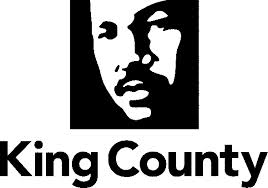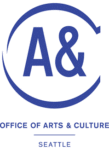
Case Study: Arts Corps
Case Study: Arts Corps
Founded: 2000
Headquartered: 4408 Delridge Way SW Seattle, WA 98106
Program Locations: South Seattle and South King County
2016 Operating Expenses: $1.36m
It is an all too familiar story in public education. Arts and music programs are the first to be cut and the last to be added as schools grapple with strapped budgets. In Washington, a state with no state income tax and a one-percent limit on state property tax dedicated to schools, schools are especially dependent on local property taxes and levies for funding. This funding scenario exacerbates opportunity gaps across districts, translating to gaps across race, ethnicity, and income; and is further compounded for arts programs where well-funded Parent-Teacher Associations often make up the difference in better-off areas. In Seattle, race is the biggest predictor of enrollment in arts classes. Participation in free and reduced-price lunch, special education, and English as a Second Language are also predictive factors.
Arts Corps, a nonprofit with a long track record of high-quality, out-of-school time arts engagement, was inspired by findings about the arts opportunity gap in public schools. They saw a major opportunity to more equitably spread their own impact and high-quality programming through public schools and dove deeply into the K-12 space.
“A creative school is a place where math is music, language arts is theater, science and visual arts intermingle seamlessly, and where opportunities for creativity and expression help young people’s social-emotional selves thrive.”
It is an all too familiar story in public education. Arts and music programs are the first to be cut and the last to be added as schools grapple with strapped budgets. In Washington, a state with no state income tax and a one-percent limit on state property tax dedicated to schools, schools are especially dependent on local property taxes and levies for funding. This funding scenario exacerbates opportunity gaps across districts, translating to gaps across race, ethnicity, and income; and is further compounded for arts programs where well-funded Parent-Teacher Associations often make up the difference in better-off areas. In Seattle, race is the biggest predictor of enrollment in arts classes. Participation in free and reduced-price lunch, special education, and English as a Second Language are also predictive factors.
Arts Corps, a nonprofit with a long track record of high-quality, out-of-school time arts engagement, was inspired by findings about the arts opportunity gap in public schools. They saw a major opportunity to more equitably spread their own impact and high-quality programming through public schools and dove deeply into the K-12 space.
Launched in 2012 and a recipient of a four-year, $1.8 million investment from the U.S. Department of Education in 2014, the Arts Corps Creative Schools Initiative is not simply about access to arts in K-12 schools (though that is certainly a need), it is about intensively integrating arts throughout the school environment. Arts Corps saw that arts engagement does not begin and end with a class period. Rather, a truly creative school is a place where teachers, families, and students engage through art in the classroom, at special events, and at home. A creative school is a place where math is music, language arts is theater, science and visual arts intermingle seamlessly, and where opportunities for creativity and expression help young people’s social-emotional selves thrive. It is also a place where arts can help transcend language and cultural barriers to traditional classroom learning.
Drawing on national models and evidence from the Center for Arts Partnerships and Columbia College Chicago, the Creative Schools Initiative embeds professional teaching artists to collaborate with teachers in four elementary schools in the Highline Public Schools district. According to a 2010 report from the Highline Superintendent’s Council on the Arts, “Highline has deficits in arts education that are impacting our students’ full preparation for college, career, and citizenship…Of primary concern is a striking inequity of access to the arts across the district.” The Council found that students living in high poverty neighborhoods were the least likely to access the arts, and that African American, Latino, and Pacific Islander students were significantly under-represented in arts classes. In the schools selected for the Creative Schools Initiative, over 70% of students come from low-income families and 22% are English Language Learners. Six hundred students a year experience 12-weeks of high-quality theater and visual arts integrated with their English Language Arts curriculum twice weekly in fifth and sixth grade classrooms. Participating teachers collaborate with the resident artists on the curriculum integration and get 14 hours of professional development outside the classroom and coaching throughout the year.
Social Impact: Integrating the arts for school success
What matters for how well you do in school? For a long time, people thought it was simply a matter of how smart you are, and many children still default to the mindset that smarts are an inborn trait. But there is more to school success than cognition. Influential work by the University of Chicago Consortium on School Research and others highlights the role of non-cognitive factors, namely academic behaviors, perseverance, mindsets, learning strategies, and social skills. Volumes of research today show that what matters for how well you do in school also includes whether you feel like you belong in school, whether you think you can grow with effort, whether you have self-confidence in your abilities, and whether you find school work relevant or valuable to you. Art integration is linked to increases in all those factors.
While concepts like social-emotional learning and developing academic mindsets are easy enough to grasp and we know how important they are, the “how-to” is something that many educators struggle with. Hillary Moore, Director of Arts Integration at Arts Corps points out that “Social-emotional learning is something that Arts and the Teaching Artist can do very naturally. You need to have some social-emotional strategies to complete a whole art project; it amplifies youth voice and has relevance built in. It is immediately about their lives and what is meaningful to them.”
The Creative Schools Initiative final evaluation is forthcoming, but evidence already shows statistically significant increases in students’ mindsets as learners, higher levels of supportive learning climates, and higher literacy achievement as measured by standardized tests. Students with an Individualized Education Plan (IEP) especially benefit, showing significantly higher levels of classroom belonging, and larger gains in delayed gratification and perseverance.
Arts Corps will always emphasize that the arts education and exposure they do is not about fostering latent artistic superstars in individual youth (though they were an early home to some now nationally recognized acts). There is a broader and nuanced community benefit to having youth that are engaged, creative, and self-reflective. Not just “keeping kids off the street,” they are actively nurturing positive characteristics that our society direly needs from our future leaders and innovators. Eduardo Mendonca, their Director of Creative Youth Development says, “Even if you go into politics or technology, anything, having people who can think creatively to maybe launch a new product, that is a societal benefit… arts education makes you imagine possibilities, makes you create and not copy.”
Sponsors
Social Impact Study Community Conversations Sponsors
![]()
![]()






